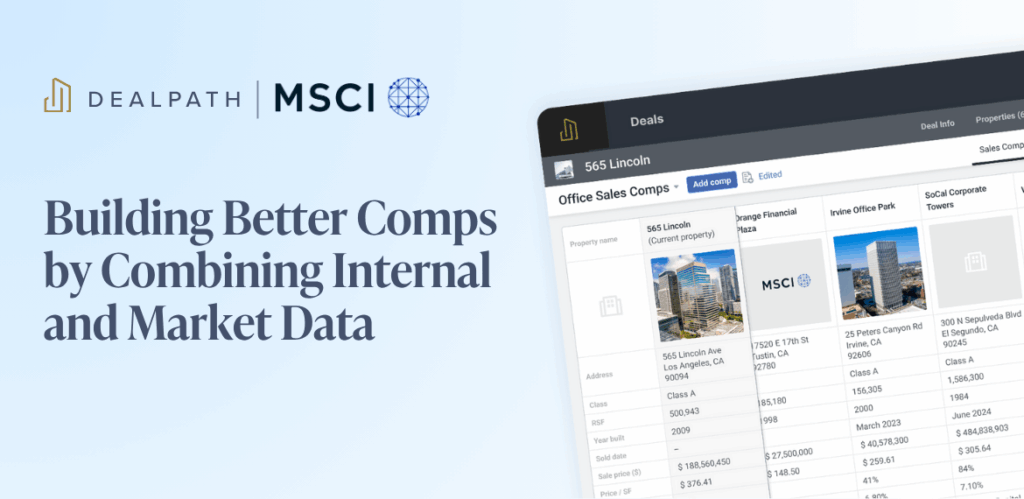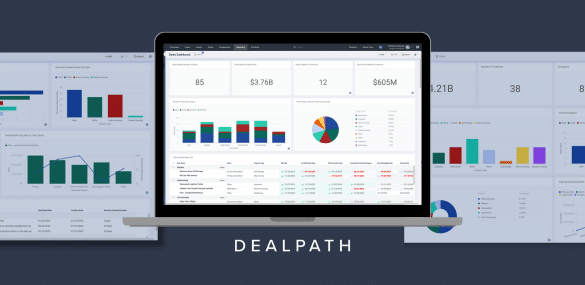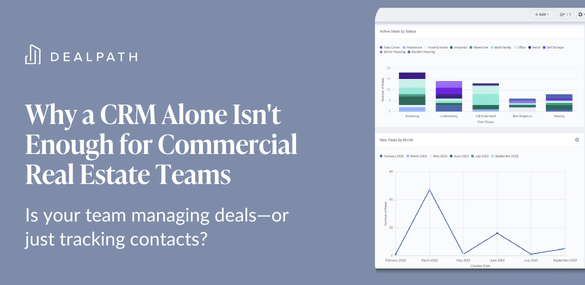This blog post was last updated on March 1st.
Managing development projects involves much more than just ticking off a few boxes. From budget oversight to permit applications, legal reviews, feasibility analyses and, ultimately, delivery, commercial real estate developers face the challenge of remaining organized, aligned and deadline-driven across all projects. As the industry deepens its reliance on technology, developers have turned to real estate development software to accelerate speed to market by managing projects in one central platform.
Mistakes, oversights and delays can be costly, from fees to the opportunity costs that come with setbacks. Real estate development software aligns teams around centralized, up-to-date project information and critical dates, keeping projects on track and minimizing risk. Read on to learn about the factors you should consider as you weigh various technology options.
Jump to:
- The Growing Urgency Behind Real Estate Development Software
- Can You Track Critical Dates Against Development Deadlines Directly Within Real Estate Software?
- Can the Software Standardize Repeatable Real Estate Development Task Checklists?
- Can You Collaborate with External Real Estate Development Partners Directly in the Software?
- Is It Construction Management Software Or High-Level Real Estate Development Software?
- Can the Real Estate Development Software Track Budgets & Financials?
- Can You Report on Development Pipelines?
The Growing Urgency Behind Real Estate Development Software
In September of 2022, the number of housing units under construction rose to 1.7 million units for the first time ever, following a multi-year increase in the number of multifamily units under construction. Other burgeoning verticals, like industrial and life sciences, continue to demonstrate potential for outsized returns, even as core markets like office face challenges.
As the market sees ongoing development demand, developers face the challenge of balancing software budget cuts with competitive advantages like speed, precision and scale. While 48% of CRE executives weigh difficult decisions about cutting costs, including software, the right solutions can be instrumental in building efficiencies. Real estate development software can be invaluable in helping stakeholders to measure and report on results, while scaling efforts with fewer resources.
6 Factors to Consider Before Purchasing Real Estate Development Software
1. Can You Track Against Critical Dates In Real Time Directly Within Real Estate Software?
Some setbacks are inevitable, but all developers aim to adhere as closely as possible to projected deadlines. However, updating calendars as projects evolve is unscalable. As you explore proptech development software options, be sure to consider how they enable teams to better track the many milestones in the process between land or building acquisition and delivery.
Development software should answer the critical question of how projects are progressing in real time for all stakeholders. Executives must maintain high-level insight into progress and milestones, where project managers require a more granular view into completed and outstanding deliverables, as well as critical dates. Additionally, team members should have the ability to leave notes that add anecdotal context about deals. Real-time visibility into critical dates empowers the entire organization to accomplish their work more efficiently and effectively.
Some development tasks can only be started after others are complete, which is why teams aim to track these timelines together. Optimally, development software should also reflect the ever-evolving pace of the real world by including dependencies. Dependencies enable firms to automatically reset dependent task due dates as timelines shift with only one manual change.
The best real estate development software options won’t limit professionals to the building phase, but cover the entire asset lifecycle. For example, deal management solutions like Dealpath offer a holistic look into the asset lifecycle, encompassing acquisition to disposition. This continuity ensures that developers have context needed from the entire project.
Dealpath gives development leaders an edge by helping nimble deal teams manage moving milestones in one place.
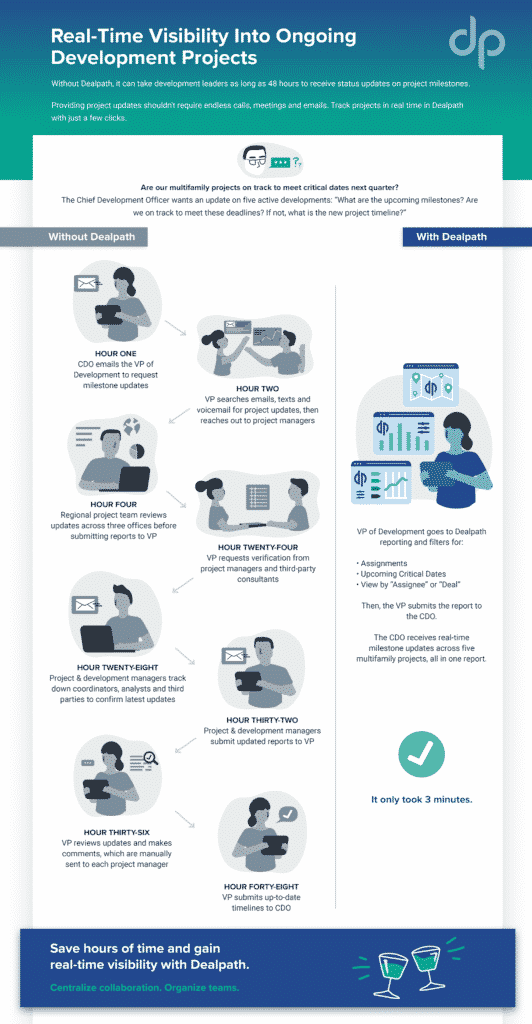
2. Can the Software Standardize Repeatable Real Estate Development Task Checklists and Automate Workflows?
Your firm shouldn’t need to recreate the wheel by adding new task lists for every project. One crucial project management goal for property development software is standardizing and automating workflows, including routine deliverables like permits, environmental reports, and much more. This helps your team operate with a repeatable approach as you add new projects to the pipeline.
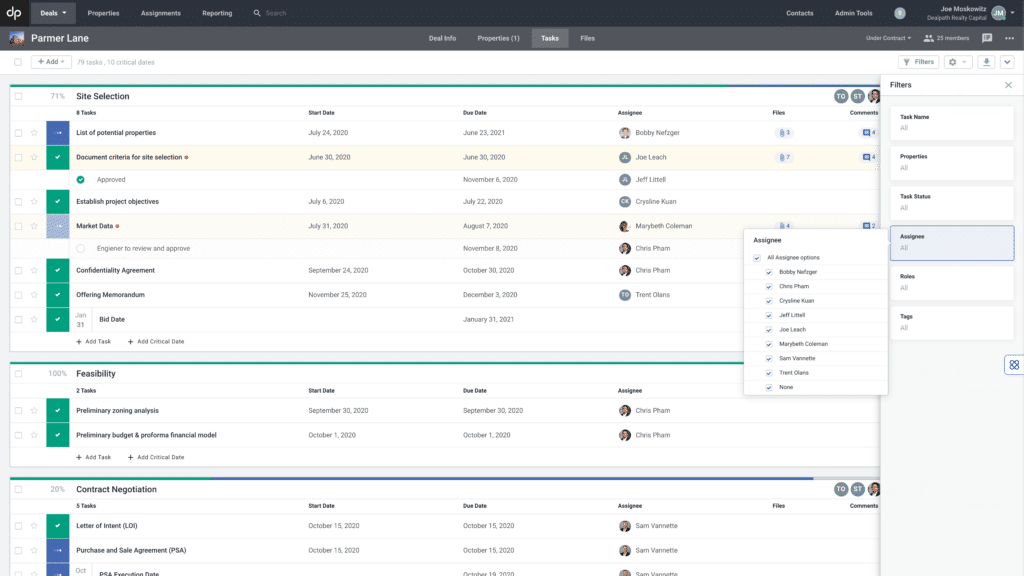
Sophisticated software will take this a step further with variable conditions for automated workflows. These lists can be applied based on factors like the property type, development type, location, and more. For example, if all ground-up development projects require a specific permit, then that task should populate for every property fitting that profile. To the same end, if every multifamily deal requires a thorough zoning evaluation, the workflow should incorporate that.
In this video, L+M Development Partners CEO Lisa Gomez explains how Dealpath has enabled their team to create an “always-on” repeatable process to boost predictability and efficiency.
3. Can You Collaborate with Internal & External Real Estate Development Partners Directly in the Software?
Between legal counsel, environmental consultants, architects, and many more, there are countless external parties that play vital roles throughout the development process. Communicating and inputting information from these third parties accounts for a significant portion of analysts’ responsibility, which can become burdensome and leave room for error. One central goal of real estate development software should be to reduce email friction with third parties, instead enabling seamless collaboration.
The best commercial real estate developer software allows third parties direct access. This gives them the opportunity to enter data, attach documents or correspond about the designated task, building efficiencies that give your team the time to tackle strategic work for more deals. When it comes time to either view development deals in progress or drill down into individual deals, these updates will be reflected and readily available.
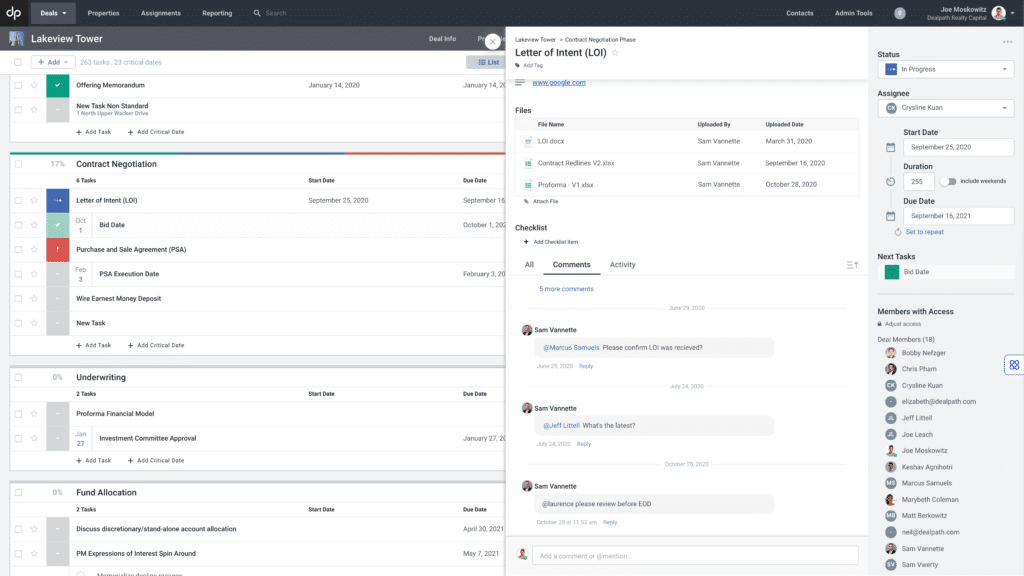
While this access can build new efficiencies, be careful to avoid allowing unrestricted visibility into every project.
4. Is It Construction Management Software Or High-Level Real Estate Development Software?
Beyond the administratively taxing pre-development process, developers must also track construction, which adds considerations like building materials, contractor management and much more. Tracking progress against projected milestones is crucial, but your development team may not need granular access to this information.
As you research commercial real estate development and investment software, consider which type of development software suits your firm’s needs, and the level of detail required to accurately track progress. Investors typically aren’t interested in the nuances of construction. Instead, a broader overview of how the project is performing against objectives, in terms of time and costs, is more valuable. Construction software like Procore, on the other hand, is more useful for general contractors managing land development.
5. Can the Real Estate Development Software Track Budgets & Financials?
Alongside day-to-day deliverables and timelines, holistic real estate development investment software must be centered around deal management, which includes numerous financial considerations.
Land development software should enable your firm to track high-level financials by uploading feasibility analyses, pro formas and other documentation. It may not offer the full functionality of real estate development accounting software, but tracking key metrics in one place is vital. Centralizing this information can also fuel deeper financial analyses, like measuring the rate of return.
Tracking this information in purpose-built software allows you to better visualize data, eliminating the pitfalls of disparate workflows like Excel spreadsheets. Over time, you can also identify patterns that offer learnings for future projects. For instance, do permits for industrial projects have more expenses attached than other asset classes? Having this data in real estate investment management software also ensures that others within the firm can take a more holistic approach to planning based on historicals.
6. Can You Report on Development Pipelines?
Keeping leadership and investors apprised of development project progress and projected earnings is imperative, but can become convoluted and time consuming. For many firms, though, creating accurate reports involves sourcing data and communicating with various team members about where projects stand and documents live. Real estate development software should instead make reporting turnkey with numerous options.
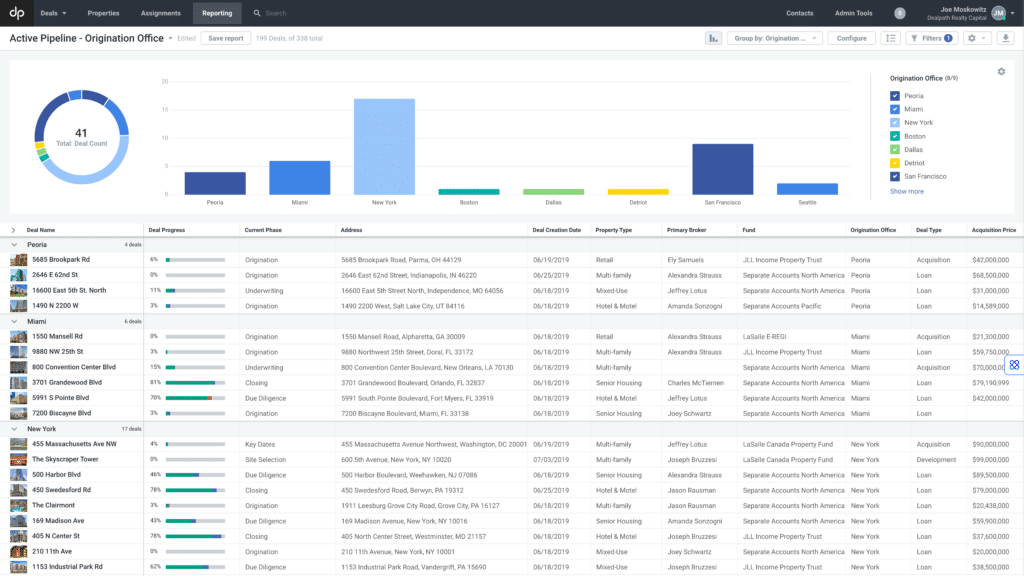
Based on your goals and the recipient of the report, you should be able to define the criteria to provide the right level of detail, whether you need a broad overview, or a drilled-down visual of deals currently in certain stages of the process. Automating this reporting cuts down on significant time spent on administrative work, while also keeping stakeholders apprised in real time.
Simplify & Scale Project Management With Dealpath
Corner Lot Development Group standardized project management and execution on Dealpath, turning hours of error-prone work into a few simple clicks. Watch our on-demand webinar to learn how your firm can scale by managing projects in one purpose-built software.
Watch Now
